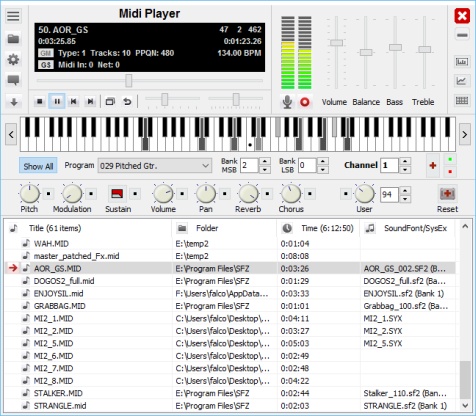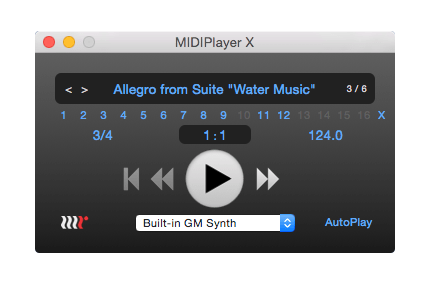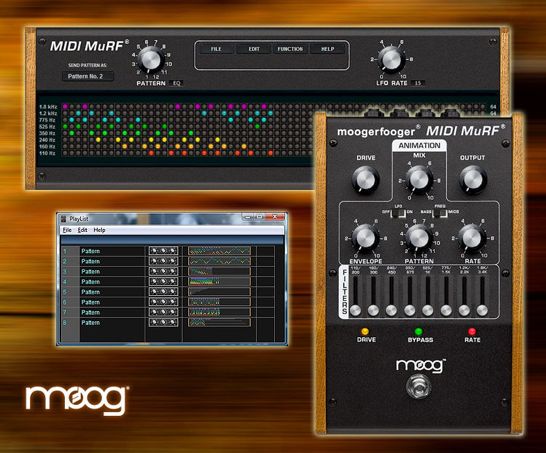

- General midi player editor for mac manual#
- General midi player editor for mac Activator#
- General midi player editor for mac software#
- General midi player editor for mac free#
- General midi player editor for mac windows#

In most cases, Live uses a standard method for mapping its functions and parameters to physical controls. Finally, press the Dump button Live will then set up your hardware automatically. The method for enabling this varies for each manufacturer and product, so consult your hardware’s documentation if you are unsure. Before pressing it, verify that your control surface is ready to receive preset dumps. If this is the case, the Dump button to the right of your control surface’s choosers in the Live Preferences will become enabled.
General midi player editor for mac manual#
If your controller is not listed here, don’t fret - it can still be enabled manually in the next section, Manual Control Surface Setup (see ‘Manual Control Surface Setup’).ĭepending on the controller, Live may need to perform a ”preset dump” to complete the setup. Open the first chooser in the Control Surface column to see whether your control surface is supported natively by Live if it is listed here, you can select it by name, and then define its MIDI input and output ports using the two columns to the right.

Up to six supported control surfaces can be used simultaneously in Live. Ģ9.1.1 Natively Supported Control SurfacesĬontrol Surfaces are defined via the menus in the Link/Tempo/MIDI tab. This is done in the Link/Tempo/MIDI tab of Live’s Preferences, which can be opened with the CTRL- ,(Win) / CMD- ,(Mac) keyboard shortcut. This is a common cause of confusion that can be easily resolved by observing the Control Bar’s MIDI indicators (see ‘MIDI In/Out Indicators’).īefore making any MIDI assignments, you will need to set up Live to recognize your control surfaces. MIDI keys that become part of remote control assignments can no longer be used as input for MIDI tracks. If you assign C-1 on your MIDI keyboard to a Session View Clip Launch button, that key will cease playing C-1 of your MIDI track’s instrument, as it now ”belongs” solely to the Clip Launch button. Let’s suppose that you are using a MIDI keyboard to play an instrument in one of Live’s MIDI tracks. Live also offers dedicated control via Ableton Push (see ‘Using Push’) and Push 2 (see ‘Using Push 2’).īefore we explain how remote control assignments are made and implemented, let’s first make the distinction between MIDI remote control and a separate use of MIDI in Live: as the input for our MIDI tracks. Live can be controlled remotely by external MIDI control surfaces, such as MIDI keyboards or controller boxes.
General midi player editor for mac Activator#

General midi player editor for mac windows#
You can use it on Windows XP and onwards. However, one feature that Midi uniquely boasts is its live karaoke support, which is quite good for those making virtual soundtracks. Also, it is significantly easier to use.Īnvil Studio does similar work, but it also provides multirack functionalities.
General midi player editor for mac free#
While you need to pay to use ADSR, Free Midi Player offers a wider variety of instruments. Also, it offers a large collection of musical instruments, much like ADSR Online Midi Editor and Player.
General midi player editor for mac software#
While the design of the software is quite cluttered and overly complicated, it has a powerful editing system where you can find anything you need. Being able to create and edit digital soundtracks is an important part of music.


 0 kommentar(er)
0 kommentar(er)
